Using other repos
Introduction to GitHub Concepts

Jasmin Ludolf
Content Developer, DataCamp
Cloning
- Similar to copy-paste
- Linked to the original repo
- Creates a copy on a local computer
- Allows updates to go back and forth
How does it work?
- With Git:
- Push changes back to the original repo
- Pull changes into our local version

Clone a repo

Clone a repo

Clone a repo
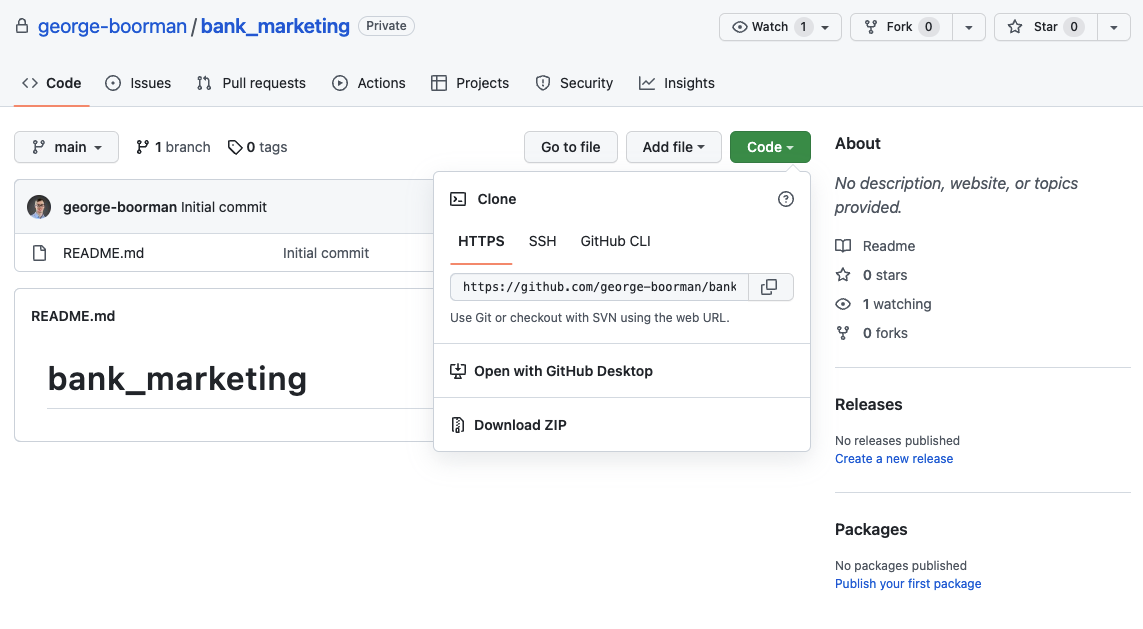
Clone a repo
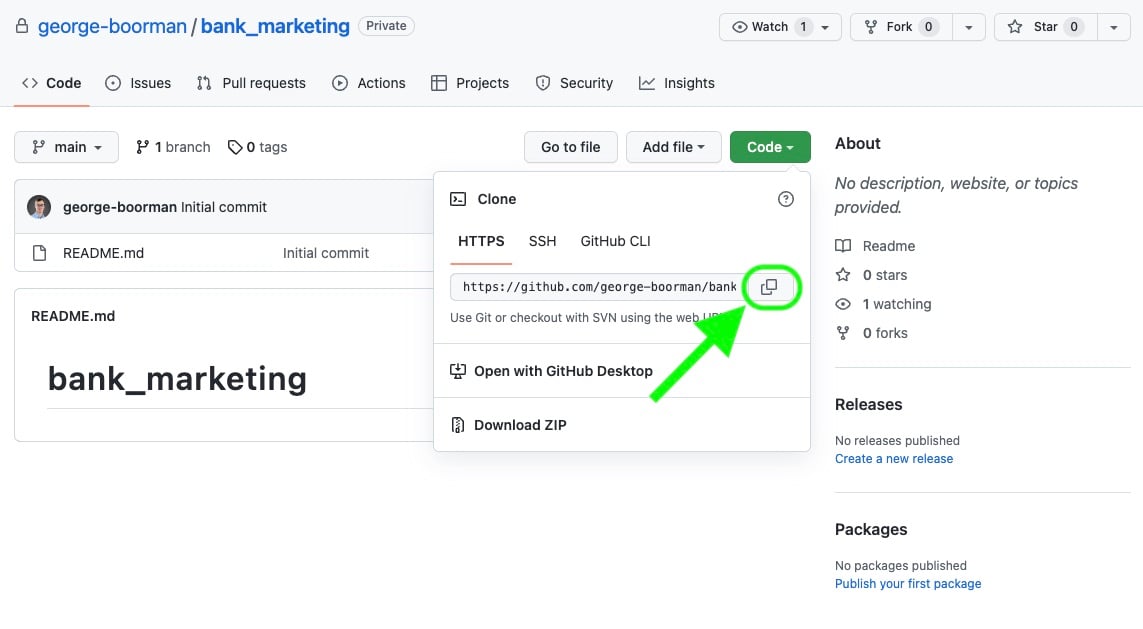
Clone a repo
$ pwd /home/jasmin/bank_project$ git clone https://github.com/george-boorman/bank_marketing.git
- May need to input GitHub logins here
> Cloning into `bank_project`...
> remote: Counting objects: 10, done.
> remote: Compressing objects: 100% (8/8), done.
> remove: Total 10 (delta 1), reused 10 (delta 1)
> Unpacking objects: 100% (10/10), done.
Clone an empty repo

Forking
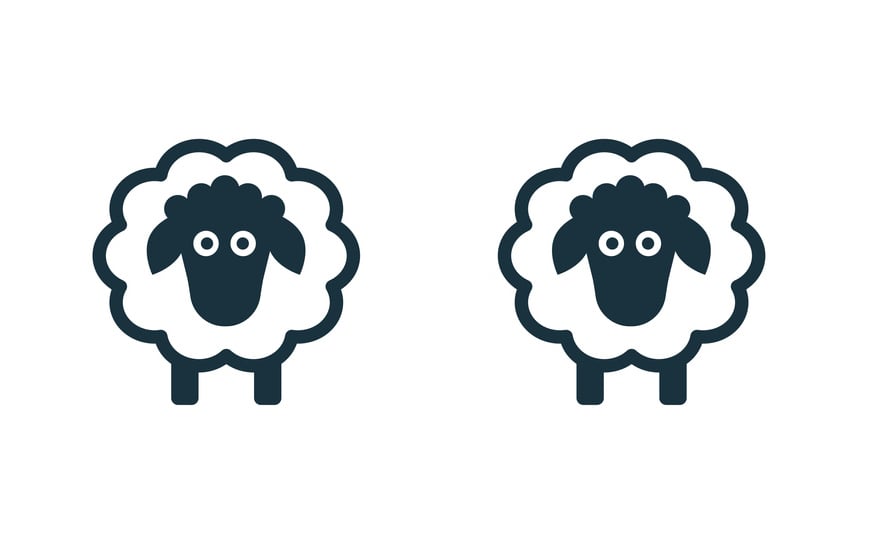
- Copy without a link to the original repo
- Forking creates an independent copy
- Good to run experiments without risk
- Used for collaboration
- Anyone can fork a public repo
- The owner of a private repo should configure their settings
- Submit changes with a pull request
- Different to creating a new branch where we need to be a collaborator
1 iStock Credit:Anton Shaparenko Stock illustration ID:1158104118
Fork a repo

Fork a repo
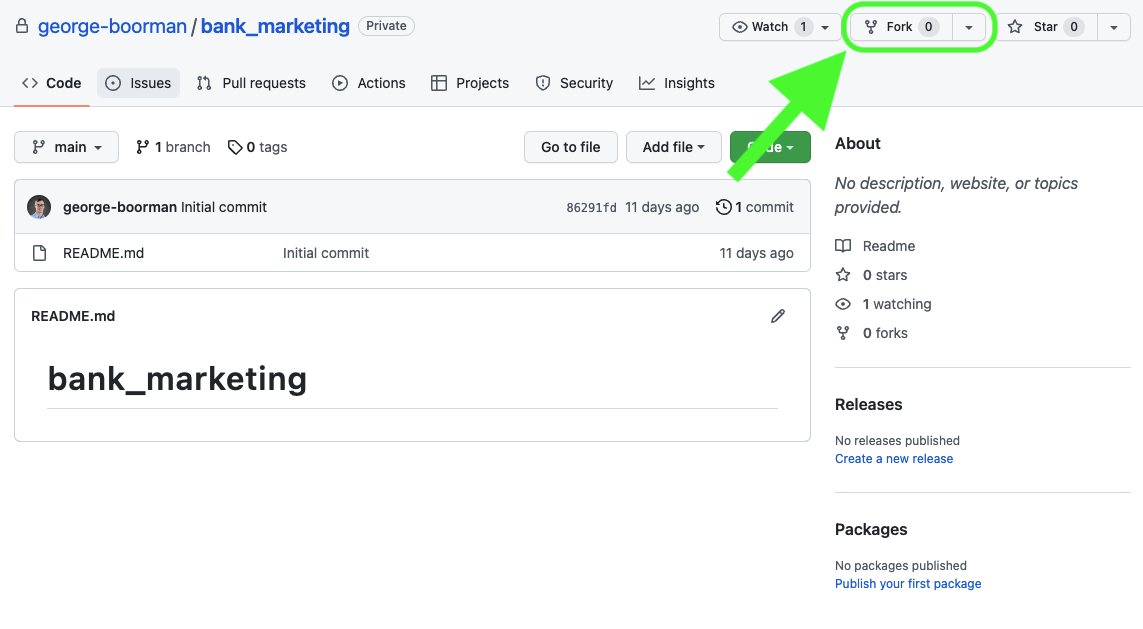
Fork a repo
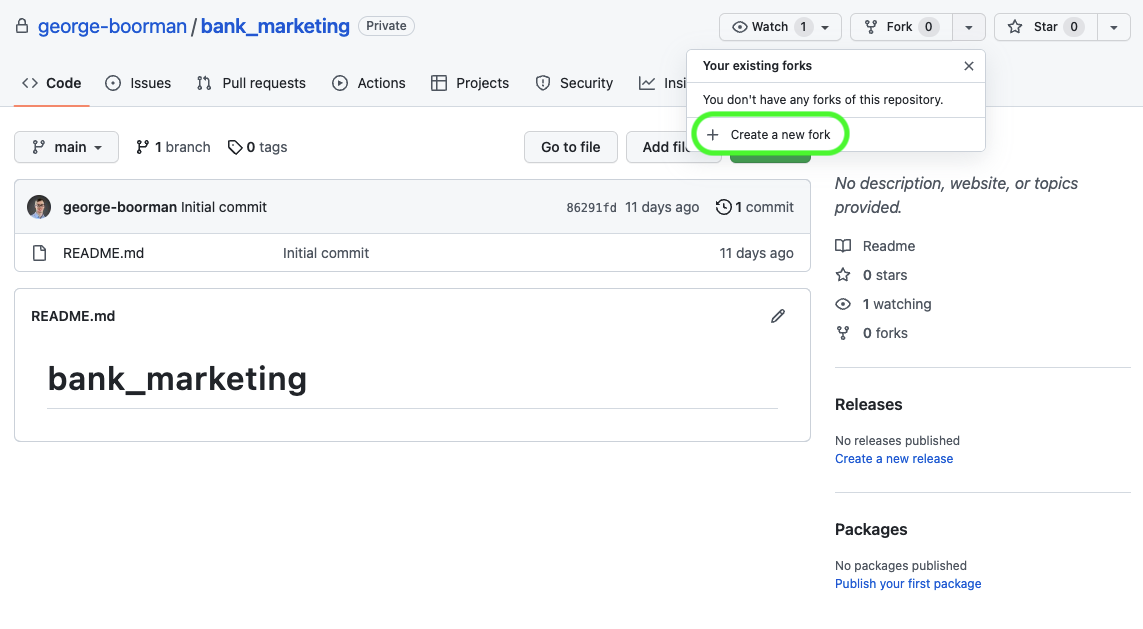
Fork a repo
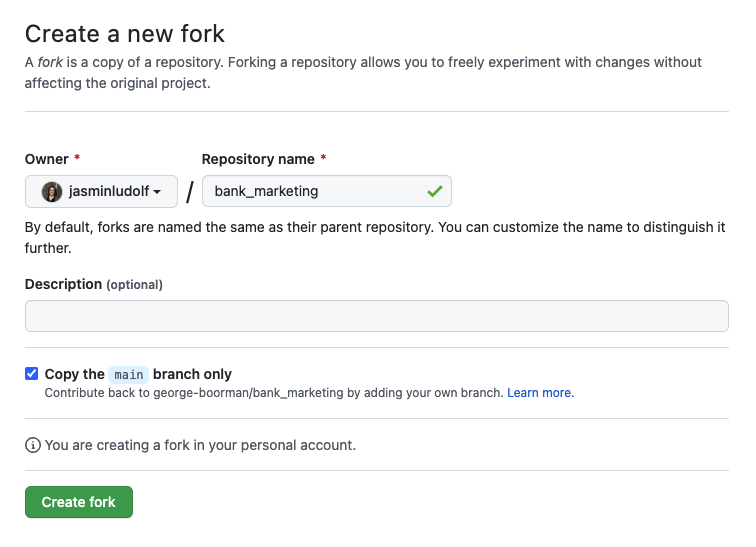
Fork a repo

Fork a repo
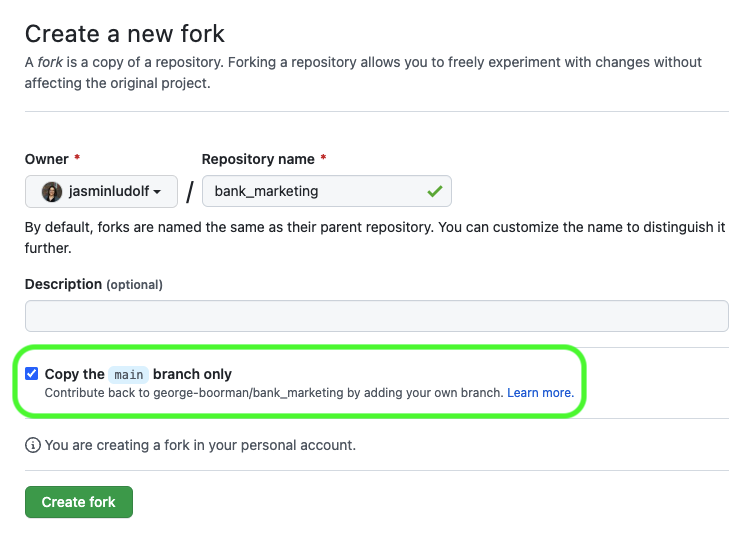
Fork a repo
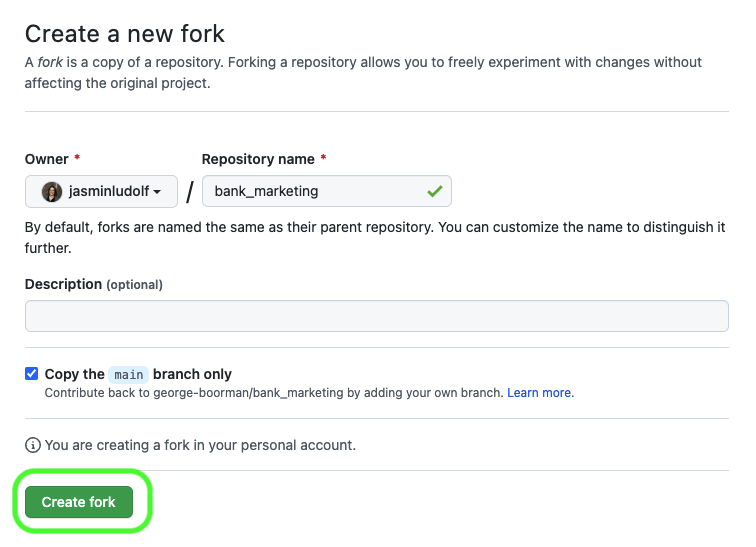
Fork a repo
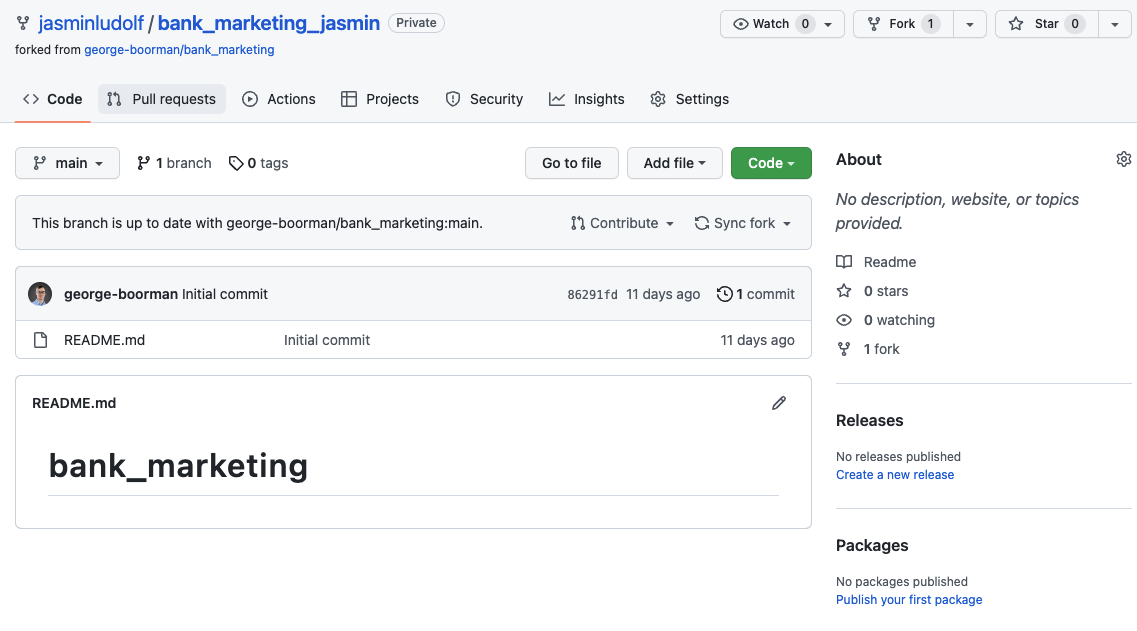
Clone vs. Fork

Cloning
- Creates a linked copy on a local computer
- Requires use of Git
- Push and pull updates with Git
- Great for collaboration

Forking
- Creates an independent copy on GitHub
- Can all be done within GitHub
- Submit changes through a PR
- Great for collaboration and experimenting
Let's practice!
Introduction to GitHub Concepts

